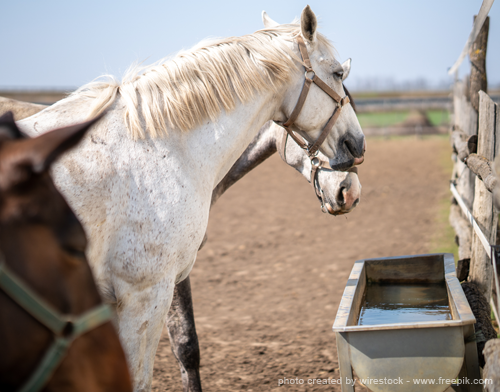Based on the article The Best Way to Cool Your Horse? Hydration from thehorse.com

Various techniques can be used to cool horses when their body temperatures soar—for example, external cooling with water. But ensuring adequate hydration before starting a workout or competition is the best way to help minimize heat stress and dehydration. Horses can thermoregulate, but to do so effectively they must be adequately hydrated. Add electrolytes to your horse’s water to help him retain and distribute fluid, and focus on hydration to avoid heat stress and reduced performance.
Let Your Horse Drink
The better a horse is hydrated the better they can sweat and thermoregulate. Horses should be allowed to drink as much as possible before, during, and after exercise, especially with added electrolytes. Dehydration decreases the horse’s ability to move blood from muscles that generate heat to the skin where cooling occurs.
Horses can sweat 10-20 or more liters of sweat per hour (equivalent to 2.5-5 gallons), and they continue to sweat even while recovering from exercise. Keeping these horses hydrated, or rehydrating them after exercise, requires electrolytes. The ideal time frame for offering electrolytes in water is within one hour of the horse being trained. This produces some reservoir of water and electrolytes in the gastrointestinal tract that helps replace water and ions lost through sweating.
Prioritizing your horse’s hydration status will not only stave off heat stress but also improve the horse’s physical and mental performance.
Room-Temperature Water Better Than Ice for Rapid Cooling in Horses
The ice-cold water does cause some vasoconstriction of blood vessels in the skin, slowing the rate of heat transfer from body to environment. Putting coolers on horses should only be used after the horse is cooled down, which can be checked by rectal temperature.




